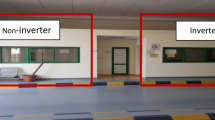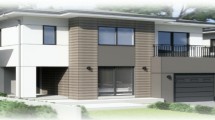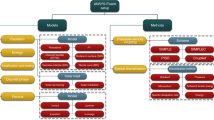Abstract
To minimize environmental impact and CO2 production associated with air-conditioning, it is reasonable to evaluate the prospects of a clean energy source. Solar energy, via thermal collectors can provide a part of the heating needs. Moreover, it can drive absorption chiller in order to satisfy the cooling needs of buildings. The objective of the work is to evaluate accurately the energy consumption of an air-conditioning system including a solar driven absorption chiller. The complete simulation environment includes the absorption chiller itself, the cooling tower, the solar collectors field, heater, storage devices, pumps, heating-cooling distribution, emission system and building. A decrease of primary energy consumption of 22% for heating and cooling is reached when using a solar air-conditioning system instead of classical heating and cooling devices. The modelling of each subsystem is detailed. TRNSYS software modular approach provides the possibility to model and simulate this complete system.
Similar content being viewed by others
References
AEC (2007). Heat & Cool FG cooling tower. http://www.aecinternet.com/images_products/files/FG%20Cooling%20Tower%20LO.pdf. Accessed 13 Jul. 2011.
Agyenim F, Knight I, Rhodes M (2010). Design and experimental testing of the performance of an outdoor LiBr/H2O solar thermal absorption cooling system with a cold store. Solar Energy, 84: 735–744.
Alessandrini JM, Fleury E, Filfi S, Marchio D (2006). Impact de la gestion de l’éclairage et des protections solaires sur la consommation d’énergie de batiments de bureaux climatisés. In: Proceedings of Climamed, 3ème congrès méditerranéen des climaticiens, Lyon, France. (in French)
Ayadi O, Mauro A, Motta M (2011). Solar heating and cooling system for office building in italy; description and performance assessment. In: Proceedings of the 4th Ostbayerisches Technologie-Transfer-Institut Solar Air-Conditioning Conference 2011, Larnaca, Cyprus.
Barbosa RM, Mendes N (2008). Combined simulation of central HVAC systems with a whole-building hygrothermal model. Energy and Buildings, 40: 276–288.
Bujedo L, Rodriguez J, Martícnez PJ, Rodríguez LR, Vicente J (2008). Comparing different control strategies and configurations for solar cooling. In: Proceedings of the International Solar Energy Society Eurosun 2008 Conference, Lisboa, Portugal.
CARRIER (2007). Fan Coil Unit Carrier 42N documentation, http://www.ahicarrier.com/pdf/PD/42N_PD.pdf. Accessed 13 Jul. 2011.
Casals XG (2006). Solar absorption cooling in Spain: Perspectives and outcomes from the simulation of recent installations. Renewable energy, 31: 1371–1389
Eicker U, Pietruschka D (2009). Design and performance of solar powered absorption cooling systems in office buildings. Energy and Buildings, 41: 81–91.
Henning H-M (2007). Solar-Assisted Air-Conditioning in Buildings: A Handbook for Planners, 2nd edn. Vienna: Springer-Verlag/Wien.
Henning H-M (2008). Solar Cooling components and systems—An overview. Solar Air-Conditioning International Seminar, 2009, Munich, Germany.
Herold KE, Radermacher R, Klein SA (1996). Absorption Chillers and Heat Pumps. Boca Raton, USA: CRC Press.
Jakob U (2011). Overview market development and potential for solar cooling with focus on the Mediterranean area. In: Proceedings of the 5th European Solar Thermal Energy Conference (ESTEC 2011) (pp. 59–64), Marseille, France.
Kagerer F, Herkel S (2010). Concepts for Net Zero Energy Buildings in refurbishment projects. In: Proceedings of the International Solar Energy Society Eurosun 2010 Conference, Graz, Austria.
Klein SA (2007). TRNSYS 16 Program Manual. SEL, University of Wisconsin, Madison, USA.
Marc O, Lucas F, Sinama F, Monceyron E (2010). Experimental investigation of a solar cooling absorption system operating without any backup system under tropical climate. Energy and Buildings, 42: 774–782.
MATLAB (2007). The Mathworks Inc., http://www.mathworks.com, Natick, USA.
Mugnier D (2002). Rafraîchissement solaire de locaux par sorption: optimisation théorique et pratique. PhD Dissertation, Ecole des mines de Paris, France. (in French)
Neyer D, Streicher W (2011). Monitoring and simulation results of two small scale solar cooling plants. In: Proceedings of the 4th Ostbayerisches Technologie-Transfer-Institut Solar Air-Conditioning Conference 2011, Larnaca, Cyprus.
Ortiz M, Barsun H, He H, Vorobieff P, Mammoli A (2009). Modeling of a solar-assisted HVAC system with thermal storage. Energy and Buildings, 42: 500–509.
Rosiek S, Batlles FJ (2009). Integration of the solar thermal energy in the construction: Analysis of the solar-assisted air-conditioning system installed in CIESOL building. Renewable Energy, 34: 1423–1431.
SCHOTT ETC 16 (2003). SCHOTT Evacuated Tube Collector ETC16 http://www.schott.com/uk/english/download/solar_thermal_rd319.pdf. Acessed 13 Jul. 2011.
Sparber W, Napolitano A (2009). IEA-SHC Task 38. List of existing solar heating and cooling installations. Available online http://iea-shc-task38.org/documents/monitoring2. Accessed 13 Jul.2011.
Stabat P (2007). IEA48—Description of Type 1c air-conditioned office buildings for simulation test, IEA-ECBCS Annex 48 working document.
Syed A, Izquierdo M, Rodriguez P, Maidment G, Missenden J, Lecuona A, Tozer R (2005) A novel experimental investigation of a solar cooling system in Madrid. International Journal of Refrigeration, 28: 859–871.
Thomas S, André P (2009a). Dynamic simulation of a complete solar assisted air-conditioning system in an office building using TRNSYS. In: Proceedings of the 11th International Building Performance Simulation Association Conference (BS2009), Glasgow, UK.
Thomas S, André P (2009b). Control strategies study of a complete solar assisted air conditioning system in an office building using TRNSYS. In: Proceedings of the 3rd Ostbayerisches Technologie-Transfer-Institut Solar Air-Conditioning Conference 2009, Palermo, Italy.
Thür A (2010). Monitoring program of small-scale solar heating and cooling systems within IEA-SHC Task 38 — Procedure and first results. In: Proceedings of the International Solar Energy Society Eurosun 2010 Conference, Graz, Austria.
TRNSYS (2006). TRNSYS Simulation Studio, Version 16.00.0038 Licensed to University of Liège.
Vukits M, Altenburger F, Thür A (2011). Operation and energy performance as well as simulation results of two solar cooling plants in Gleisdorf. In: Proceedings of the 4th Ostbayerisches Technologie-Transfer-Institut Solar Air-Conditioning Conference 2011, Larnaca, Cyprus.
WESPER VLH HE 804 (2005). Air-to-Water Reverse Cycle Heat Pumps VLH 504 to 1204 Technical Brochure, Wesper S.A.S., Pons, France.
Wiemken E, Wewior JW, Elias AP, Nienborg B, Koch L (2010). Performance and perspectives of solar cooling. In: Proceedings of the International Solar Energy Society Eurosun 2010 Conference, Graz, Austria.
YAZAKI (2008). Water Fired Chiller/Chiller-Heater WFC-S Series documentation http://www.yazakienergy.com/waterfiredperformance.htm. Accessed 13 Jul. 2011.
Zhai XQ, Qu M, Li Y, Wang RZ (2011). A review for research and new design options of solar absorption cooling systems. Renewable and Sustainable Energy Reviews, 15: 4416–4423.
Zweifel G, Dorer V, Koschenz M, Weber A (1995). Building energy and system simulation programs: model development, coupling and integration. In: Proceedings of 9th International Building Performance Simulation Association Conference (BS2005), Madison, Wisconsin, USA.
Author information
Authors and Affiliations
Corresponding author
Rights and permissions
About this article
Cite this article
Thomas, S., André, P. Numerical simulation and performance assessment of an absorption solar air-conditioning system coupled with an office building. Build. Simul. 5, 243–255 (2012). https://doi.org/10.1007/s12273-012-0060-0
Received:
Revised:
Accepted:
Published:
Issue Date:
DOI: https://doi.org/10.1007/s12273-012-0060-0




